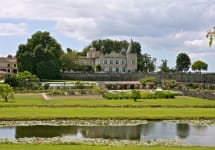Chateau Lafite Rothschild 2010
-
Robert
Parker -
Wine
Enthusiast -
James
Suckling - Decanter
-
Wine
Spectator
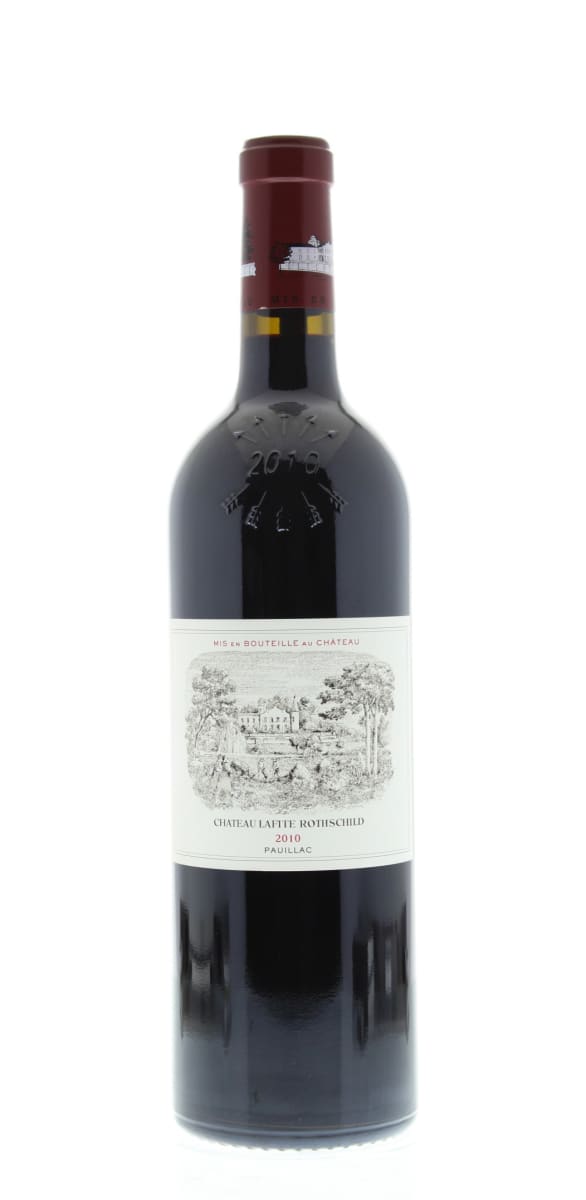



Product Details
Your Rating
Somm Note
Winemaker Notes
Blend: 87% Cabernet Sauvignon, 13% Merlot
Professional Ratings
-
Robert Parker's Wine Advocate
Deep garnet in color, the 2010 Lafite Rothschild is a little mute on the nose at this stage, opening to reveal warm blackcurrants, baked plums and boysenberry scents with hints of chocolate mint, violets, cedar chest and pencil lead. Full-bodied, rich and densely packed with perfumed black fruit layers, it has a rock-solid backbone of fantastically ripe, grainy tannins and beautiful freshness, finishing very long and minerally. Still very youthful!
-
Wine Enthusiast
Almost black in color, this stunning wine is gorgeous, rich and dense. It's grand and powerful, with a strong sense of its own importance. The beautiful tannins and the fragrant black currant fruits are palpable. It's a great wine, with huge potential. Cellar Selection.
-
James Suckling
This is shy and not giving its all at the moment. Yet it is full and intense with a tightly intertwined tannic and fruit structure. Ethereal blackberry, currant, cedar, and nutty flavors. Dried flowers too. Cedar jewel box smell comes out with time. Great finish. So, so long and harmonious.
-
Decanter
The youngest wine we had in the vertical, and clear evidence of how the 10 year rule for classified Bordeaux is far too soon for first growths in great vintages. For Lafite, this was the last great vintage before 2016 came around, and it probably needs another decade to really get into its stride - although five should do it to kick things off. The year began with a wet spring during flowering, so produced lower quantities than 2009. July, August and September were extremely dry with cool nights, perfect for the grapes, with a few touches of rain before harvest. The black fruit notes (cassis barely begins to cover it) have deepened and softened just the merest whisper since its first few years, and it's still extremely young and concentrated. The tannins are starting to take on a truly silky, elevated quality, where the bilberry and blueberry fruit starts to melt right into them, finessed with touches of liquorice and slate. This is hugely complex, and it's very hard to say when this will stop evolving.
-
Wine Spectator
Rather tight, with an alluring whiff of cocoa that lures you in before disappearing into the core of steeped plum, roasted fig and blackberry coulis notes. Sandalwood, black tea and loam elements fill in on the long and expansive finish. This seems to be lying in wait for what could be a very long time in the cellar before unfurling fully. Best from 2018 through 2045.
Other Vintages
2024-
James
Suckling - Vinous
-
Robert
Parker
-
Robert
Parker -
James
Suckling - Decanter
- Vinous
-
Jeb
Dunnuck
-
Robert
Parker -
James
Suckling -
Jeb
Dunnuck - Decanter
- Vinous
-
Wine
Enthusiast - Vinous
- Decanter
-
James
Suckling -
Robert
Parker -
Jeb
Dunnuck
-
Jeb
Dunnuck -
Wine
Enthusiast -
James
Suckling -
Robert
Parker - Decanter
-
Robert
Parker -
James
Suckling -
Jeb
Dunnuck - Decanter
-
Wine
Spectator
-
Robert
Parker -
Wine
Enthusiast -
James
Suckling -
Jeb
Dunnuck - Decanter
-
Wine
Spectator
-
Robert
Parker -
James
Suckling - Decanter
-
Wine
Enthusiast -
Wine
Spectator -
Jeb
Dunnuck
-
James
Suckling - Decanter
-
Jeb
Dunnuck -
Wine
Enthusiast -
Robert
Parker -
Wine
Spectator
-
Wine
Enthusiast -
James
Suckling - Decanter
-
Jeb
Dunnuck -
Robert
Parker -
Wine
Spectator
-
James
Suckling -
Wine
Enthusiast -
Wine
Spectator -
Robert
Parker - Decanter
-
James
Suckling -
Wine
Enthusiast -
Wine
Spectator
-
Wine
Enthusiast -
James
Suckling -
Wine
Spectator -
Wilfred
Wong -
Robert
Parker
-
Wine
Enthusiast -
James
Suckling -
Wine
Spectator -
Robert
Parker
-
James
Suckling -
Wilfred
Wong -
Robert
Parker - Decanter
-
Wine
Spectator -
Wine
Enthusiast
-
Robert
Parker -
Wine
Enthusiast -
Wilfred
Wong -
James
Suckling -
Wine
Spectator
-
Wine
Enthusiast -
Robert
Parker -
Wine
Spectator
-
Robert
Parker -
Wine
Enthusiast -
James
Suckling -
Wine
Spectator -
Wine &
Spirits
- Decanter
-
Wine
Enthusiast -
Wine
Spectator -
Robert
Parker -
Wine &
Spirits
-
Wine
Enthusiast -
Wine &
Spirits -
Robert
Parker -
Wine
Spectator
-
Robert
Parker -
James
Suckling -
Wine
Enthusiast -
Wine
Spectator -
Wine &
Spirits
-
Wine
Spectator -
Robert
Parker - Decanter
-
Robert
Parker -
Wine
Spectator
-
James
Suckling -
Wine
Spectator -
Wine
Enthusiast -
Robert
Parker
-
Robert
Parker -
Wine
Spectator
-
Robert
Parker -
Wine
Spectator -
Wine &
Spirits - Decanter
-
Robert
Parker -
Wine
Spectator
- Decanter
-
Robert
Parker -
James
Suckling -
Wine
Spectator
-
James
Suckling -
Wine
Spectator -
Robert
Parker
-
Wine
Spectator -
Robert
Parker
-
James
Suckling
-
James
Suckling
-
Robert
Parker -
Wine
Spectator
-
James
Suckling -
Wine
Spectator -
Robert
Parker
-
Robert
Parker -
James
Suckling -
Wine
Spectator
-
Robert
Parker -
Wine
Spectator
-
James
Suckling - Decanter
-
Robert
Parker -
Wine
Spectator
-
James
Suckling -
Robert
Parker - Decanter
-
Wine
Spectator
-
Robert
Parker
-
Robert
Parker
-
Wine
Spectator
-
Wine
Spectator
-
James
Suckling -
Robert
Parker
-
Robert
Parker
-
Robert
Parker -
Wine
Spectator

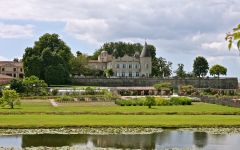

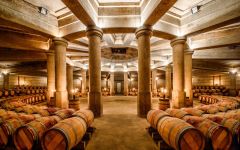


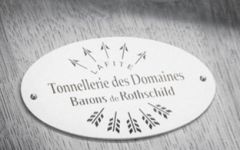
Chateau Lafite Rothschild is one of only four classified first growths and thus the designation as 1st er Cru. The vintage rankings of the Universal Paris Exposition in 1855 officially gave Lafite the rating as “Leader among fine wines.” While the first known reference to Lafite dates to 1234 with a certain Gombaud de Lafite, abbot of the Vertheuil Monastery north of Pauillac, Lafite’s mention as a medieval fief dates to the 14th century. The name Lafite comes from the Gascon language term “la hite”, which means “hillock”. There were probably already vineyards on the property at the time when the Ségur family organised the vineyard in the 17th century, and Lafite began to earn its reputation as a great winemaking estate. Jacques de Ségur was credited with the planting of the Lafite vineyard in the 1670s and in the early 1680s. The estate achieved wide popularity in the 1750s when it became the favorite wine of King Louis XV. Thomas Jefferson was also a steadfast customer and even visited the estate. After the 1973-1976 mini-crisis that hit Bordeaux, Baron Eric’s management of the estate made strides forward with a search for excellence and the gradual addition of a new technical team. In 1985 Baron Eric began a tradition of inviting fine-arts photographers to photograph Chateau Lafite. Today, his daughter Saskia de Rothschild represents the 6th generation of the family at the head of the winemaking properties.

One of the world’s most classic and popular styles of red wine, Bordeaux-inspired blends have spread from their homeland in France to nearly every corner of the New World. Typically based on either Cabernet Sauvignon or Merlot and supported by Cabernet Franc, Malbec and Petit Verdot, the best of these are densely hued, fragrant, full of fruit and boast a structure that begs for cellar time. Somm Secret—Blends from Bordeaux are generally earthier compared to those from the New World, which tend to be fruit-dominant.

The leader on the Left Bank in number of first growth classified producers within its boundaries, Pauillac has more than any of the other appellations, at three of the five. Chateau Lafite Rothschild and Mouton Rothschild border St. Estephe on its northern end and Chateau Latour is at Pauillac’s southern end, bordering St. Julien.
While the first growths are certainly some of the better producers of the Left Bank, today they often compete with some of the “lower ranked” producers (second, third, fourth, fifth growth) in quality and value. The Left Bank of Bordeaux subscribes to an arguably outdated method of classification that goes back to 1855. The finest chateaux in that year were judged on the basis of reputation and trading price; changes in rank since then have been miniscule at best. Today producers such as Chateau Pontet-Canet, Chateau Grand Puy-Lacoste, Chateau Lynch-Bages, among others (all fifth growth) offer some of the most outstanding wines in all of Bordeaux.
Defining characteristics of fine wines from Pauillac (i.e. Cabernet-based Bordeaux Blends) include inky and juicy blackcurrant, cedar or cigar box and plush or chalky tannins.
Layers of gravel in the Pauillac region are key to its wines’ character and quality. The layers offer excellent drainage in the relatively flat topography of the region allowing water to run off into “jalles” or streams, which subsequently flow off into the Gironde.
